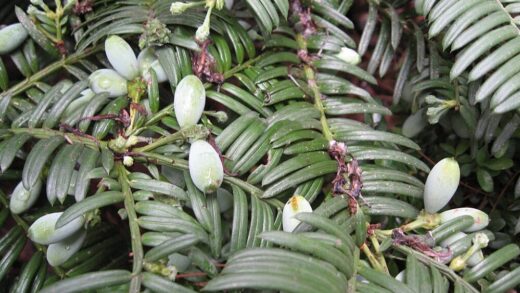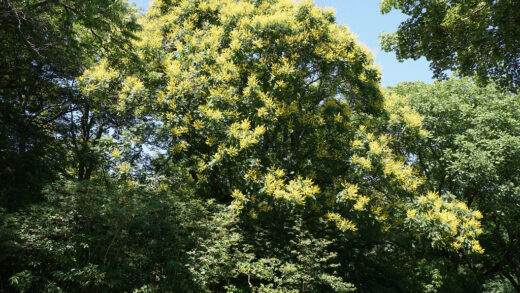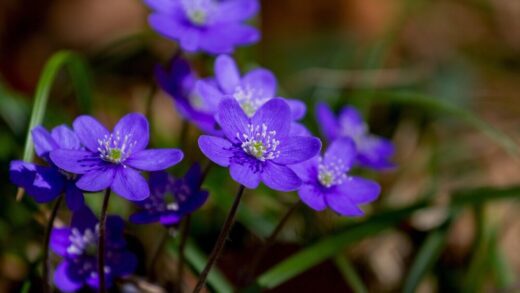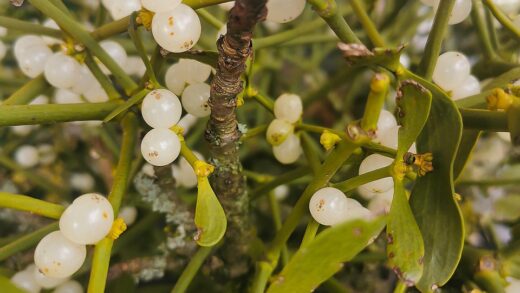While the peach-leaved bellflower is generally regarded as a robust and resilient perennial, it is not entirely immune to the challenges posed by various diseases and pests. A vigilant gardener who can recognize the early signs of trouble will be far more successful at maintaining the health and aesthetic appeal of these graceful plants. Most issues that arise are often linked to environmental conditions, such as poor air circulation, overly wet soil, or plant stress. Therefore, the first and most effective line of defence is always prevention through good cultural practices: proper siting, adequate spacing, well-drained soil, and appropriate watering techniques. By creating an environment where the plant can thrive, you naturally make it less susceptible to attack.
Fungal diseases are among the most common afflictions for Campanula persicifolia, with powdery mildew, rust, and various forms of rot being the primary concerns. These diseases tend to flourish in damp, humid conditions with stagnant air. Understanding the life cycle and appearance of these pathogens is key to managing them effectively. Early detection allows for simple interventions, such as removing affected leaves, which can often prevent a minor issue from escalating into a major problem. In many cases, improving environmental conditions is a more sustainable solution than relying solely on chemical treatments.
On the pest front, the tender new growth of the bellflower in spring can be a tempting meal for several common garden invertebrates. Slugs and snails are particularly notorious for causing significant damage to the emerging foliage, sometimes grazing young plants right down to the ground. Aphids, too, may occasionally colonize the stems and flower buds, sucking sap and potentially weakening the plant. Recognizing the specific type of damage and identifying the culprit is the first step in implementing an appropriate and effective control strategy, which can range from simple physical barriers and hand-picking to the use of biological controls or insecticidal soaps.
Ultimately, managing pests and diseases on your peach-leaved bellflowers is an integral part of the gardening process. It requires a proactive and observant approach, prioritizing plant health and preventative measures over reactive chemical treatments. By fostering a balanced garden ecosystem and promptly addressing any issues that do arise, you can ensure that these beautiful perennials remain a healthy and vibrant feature in your garden borders for many years, their elegant spires of flowers untouched by the adversaries that lurk in the garden.
Common fungal diseases
One of the most frequently encountered diseases on peach-leaved bellflowers is powdery mildew. This fungal disease is easily identifiable by the characteristic white, powder-like coating that appears on the surfaces of leaves, stems, and sometimes even the flower buds. While it rarely kills the plant, a severe infection can be unsightly, reduce the plant’s vigour by interfering with photosynthesis, and may cause leaves to yellow, distort, or drop prematurely. Powdery mildew thrives in conditions of high humidity and moderate temperatures, particularly when days are warm and nights are cool, but it dislikes wet leaf surfaces.
More articles on this topic
Another fungal issue that can affect this plant is rust. Rust diseases appear as small, reddish-brown or orange pustules, typically on the undersides of the leaves. If you rub an infected leaf, a powdery residue of spores will often come off on your fingers. A heavy rust infection can cause leaves to become yellow and distorted before they eventually wither and fall off, which can weaken the plant. Like powdery mildew, rust fungi are favoured by humid weather and can spread via wind and water splash.
Root and crown rot are perhaps the most serious diseases that can afflict the peach-leaved bellflower, as they can be fatal. These diseases are caused by various soil-borne fungi and water moulds that attack the base and root system of the plant, especially in poorly drained, waterlogged soils. The symptoms above ground can be deceptive, often appearing as wilting, yellowing leaves, and stunted growth, which a gardener might misinterpret as a sign of drought. However, upon inspection, the crown of the plant will be soft, brown, or black, and the roots will be mushy and decayed. Prevention through excellent soil drainage is the only effective cure.
To prevent these fungal diseases, focus on providing the right growing conditions. Ensure your plants have good air circulation by spacing them properly and not allowing them to become too crowded. Water at the base of the plant in the morning to keep the foliage dry. If disease does appear, remove and destroy any affected leaves or stems immediately to prevent the spores from spreading. For persistent powdery mildew or rust, horticultural oils or sulfur-based fungicides can be effective if applied early, but improving cultural conditions should always be the primary goal.
Key invertebrate pests
Slugs and snails are undoubtedly the most significant pests of the peach-leaved bellflower, particularly in the spring. As the tender new leaves emerge from the basal rosette, they provide a succulent and irresistible meal for these molluscs. The damage is characterized by ragged holes in the leaves or, in the case of a severe infestation on young plants, the entire foliage can be eaten away, leaving only the central stems. Slugs and snails are most active at night and in damp, cool conditions, so their presence may not be immediately obvious during the day, although their tell-tale slime trails are a clear sign of their activity.
More articles on this topic
Aphids are another common pest that may be found on these plants. These small, sap-sucking insects tend to congregate in colonies on the tender new growth, flower stems, and buds. A heavy infestation can cause the leaves to curl or become distorted, and the buds may fail to open properly. As they feed, aphids excrete a sticky substance called honeydew, which can lead to the growth of sooty mould. While a small number of aphids are unlikely to cause significant harm, large populations can weaken the plant and reduce its aesthetic appeal.
Spider mites, although less common, can become a problem in hot, dry conditions. These tiny arachnids are difficult to see with the naked eye, but their presence can be identified by a fine webbing on the undersides of leaves and a stippled, yellowed appearance of the foliage. They thrive in dusty, water-stressed environments. Like aphids, they feed by sucking the sap from the plant cells, which reduces the plant’s vigour and can cause significant cosmetic damage if the population becomes large.
Other pests, such as vine weevil larvae, may occasionally cause problems by feeding on the roots, leading to sudden wilting and plant collapse. However, this is a less frequent issue for bellflowers grown in open ground. The key to managing all these pests is regular inspection of your plants, especially during periods of active growth. Catching an infestation early makes it much easier to control before it causes significant damage.
Integrated pest management strategies
An integrated pest management (IPM) approach is the most effective and environmentally responsible way to deal with pests on your peach-leaved bellflowers. IPM focuses on prevention and uses a combination of control methods, with chemical pesticides being a last resort. The first step is to encourage natural predators in your garden. Birds, ladybirds, lacewings, hoverflies, and ground beetles are all voracious predators of pests like aphids, slugs, and snails. You can attract these beneficial creatures by planting a diverse range of flowering plants, providing a source of water, and avoiding the use of broad-spectrum insecticides.
For slugs and snails, physical barriers and trapping can be very effective. Spreading a ring of coarse sand, crushed eggshells, or diatomaceous earth around the base of the plants can deter them. Copper tape placed around the rim of pots or raised beds is also an effective barrier. Simple traps, such as a saucer of beer sunk into the soil or a hollowed-out grapefruit rind placed upside down, can be used to attract and collect them. Hand-picking them at night with a torch is also a highly effective, albeit labour-intensive, method of control.
If you have an aphid infestation, often a strong jet of water from a hose is enough to dislodge them from the plant. This may need to be repeated every few days for a week or so to get the population under control. For more persistent problems, an application of insecticidal soap or horticultural oil can be effective. These products work by suffocating the insects on contact and have a low impact on beneficial insects, provided they are not sprayed directly on them. Always follow the product instructions carefully and apply in the evening to avoid scorching the leaves.
Maintaining plant health is a core principle of IPM. A healthy, vigorous plant is naturally more resistant to both pests and diseases than a plant that is stressed by poor growing conditions. Ensure your peach-leaved bellflowers are planted in well-drained soil, receive the appropriate amount of sunlight, and are watered and fed correctly. A happy plant is a resilient plant, and by focusing on good cultural practices, you can prevent many pest and disease problems from ever starting.
Prevention as the best cure
The most effective strategy for dealing with diseases and pests is to prevent them from becoming a problem in the first place. This preventative approach begins with selecting the right planting location. Choose a site with full sun to partial shade and, most importantly, well-drained soil. As mentioned, waterlogged soil is the primary cause of root and crown rot, the most deadly of the potential diseases. Amending heavy soils with organic matter and grit before planting is a crucial preventative step.
Proper spacing between plants is also vital. Overcrowded plants have poor air circulation, which creates a stagnant, humid microclimate around the foliage. This is the perfect breeding ground for fungal diseases like powdery mildew and rust. When planting your bellflowers, be sure to space them according to their mature size, typically 12 to 18 inches apart, to allow plenty of air to move freely between them. This simple measure helps to keep the leaves dry and significantly reduces the risk of fungal spores taking hold.
Good garden hygiene plays a significant role in disease prevention. In the autumn, after the plants have died back, be sure to clean up and remove all the dead foliage and stems from around the base of the plants. This debris can harbour fungal spores and the eggs of pests over the winter, which will then re-infect the plant’s new growth in the spring. By removing this material, you are breaking the life cycle of these pathogens and pests.
Finally, choose disease-resistant varieties when possible and always inspect new plants carefully before introducing them to your garden. A plant from a nursery could potentially carry pests or diseases that could spread to your existing plants. By following these preventative cultural practices, you create a garden environment that promotes plant health and resilience, minimizing the need for reactive treatments and ensuring your peach-leaved bellflowers remain beautiful and trouble-free.


















